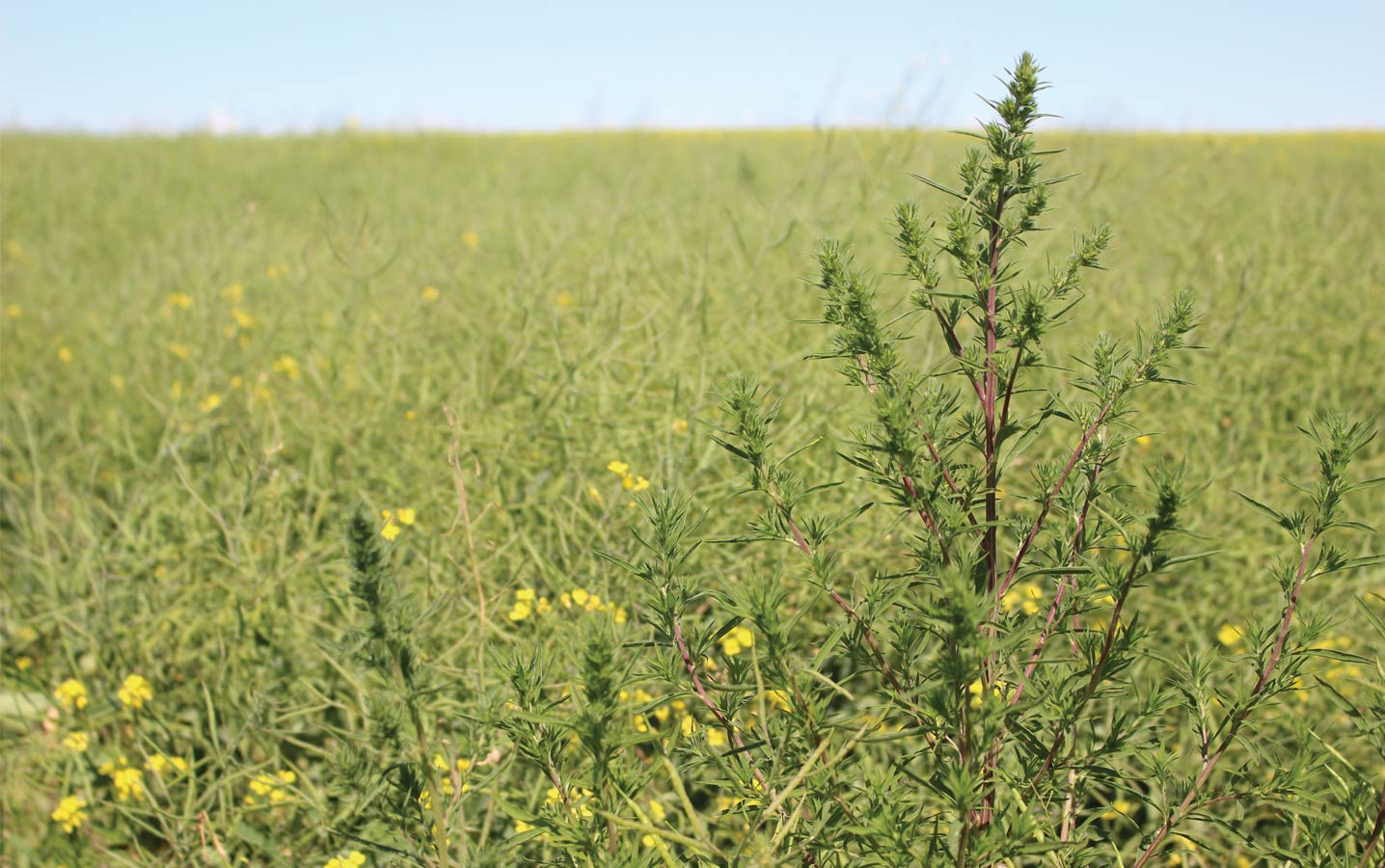Herbicide resistance prevention
1. The challenge
Herbicide-resistant weeds have become an all too familiar problem across Western Canada. Whether Group-1 or -2 resistant wild oats, Group-2 resistant cleavers or Group-9 resistant kochia, they present an increasing challenge. For successful weed management, farmers now have to stay on top of current resistance issues and take measures to avoid the selection of more herbicide-resistant weeds. It is a daunting task.
2. The risks
From a herbicide resistance standpoint, Western Canada has been fortunate. We have yet to deal with a resistance issue that fundamentally changes crop production. That is not the case in Australia, where chaff carts have become the norm as a last resort to deal with annual ryegrass, or in the Southern U.S., where glyphosate-resistant palmer amaranth has to be hand weeded out of cotton fields. That being said, without changing our current approach to weed management, we continue to select for herbicide-resistant weeds. Wild oat, green foxtail and cleavers are ranked among the most likely weeds to next develop glyphosate resistance in Western Canada. The loss of glyphosate to manage any of those key species in addition to our current resistance problems would directly result in large yield and quality losses. This would also threaten the sustainability of no-till or minimum-tillage systems, which rely on glyphosate.
3. The Solution
Integrated weed management (IWM) adds extra steps to weed management, but it is essential to put these tools to use now while glyphosate and other herbicide options are still effective.
4. IMW Options
Incorporate a few of these steps to improve weed control, diversify the attack and increase crop competitiveness:
Tank mix different effective modes of action.
- Use vigorous seed and seed shallow.
- Increase seeding rates.
- Decrease row spacing for earlier canopy closure.
- Grow taller varieties.
- Band nitrogen close to the crop.
- Use winter annual crops and perennials in rotation. (Short-term alfalfa can reduce wild oat and green foxtail populations by up to 80 per cent.)
- Change seeding dates on a field. (Early seeding of a competitive crop like barley can give you a jump on weeds.)
- Use strategic tillage.
- Try alternate cropping strategies such as cover crops and intercropping to extend ground cover through more of the season.
5. Costs and ROI
The return on investment (ROI) for IWM can be difficult to measure, at least in the short term. In the long term, ROI will be positive if selection pressure and ultimately the development of additional herbicide-resistant weeds is delayed or stopped.
Incorporating IWM into farm practices can have additional agronomic benefits as part of a larger pest management program, such as additional nitrogen from incorporating a short-term alfalfa stand or reduced insect or disease pressure from diverse rotations.
The costs of IWM vary depending on the methods used and need to be evaluated case by case. Differences in seed costs may make increasing seeding rates in cereals more cost effective than in canola, while changing seeding dates on a field has very little added cost. Some of the costs of IWM are in the time and energy spent on planning and implementing long-term weed management strategies. It takes some vision to see the benefit of IWM. Is the vision of hand weeding or pulling a chaff cart behind the combine motivation enough?





